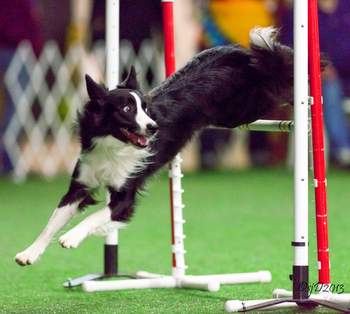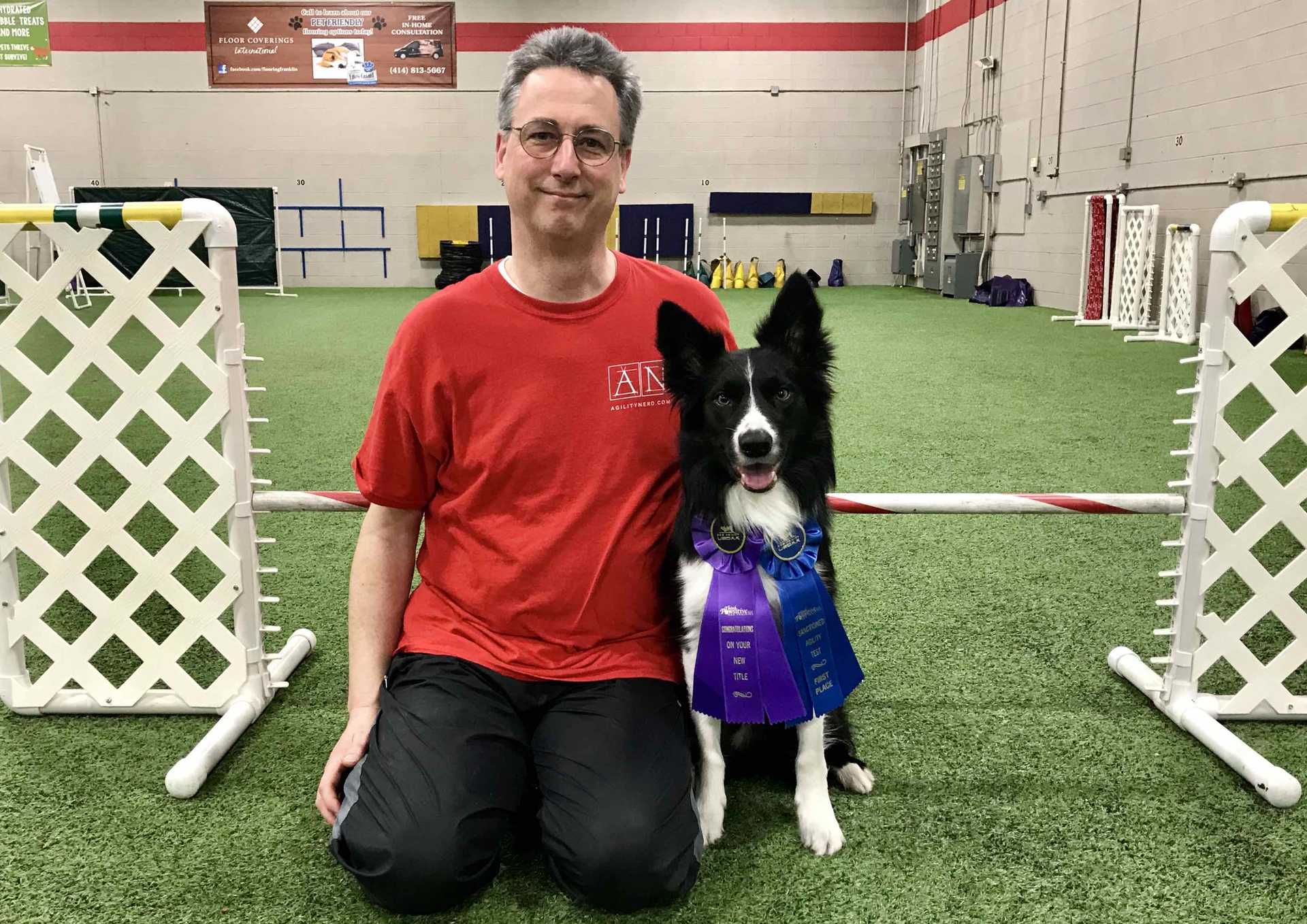My Dog is Stutter Stepping, Hesitating, or Weave Popping
07 Apr 2014
In seminars I sometimes come across handlers who say that about their dog or I observe it on course. I’m not talking about the occasional misjudging, bar knock, or missed weave pole. I mean consistently around a course. There are dogs who are not that interested in agility, for whom the handler hasn’t unlocked their fun for the game, but those dogs usually move smoothly, if slowly. For the dogs who show the behavior throughout the sequence my advice is always the same:

My first step in evaluation is to have the dog seen by a professional experienced with musculoskeletal and soft tissue injuries. Most of the time that is the cause. Sometimes you can feel the sore area gives off more heat than unaffected areas - I’m not good at feeling that, I can usually only feel it if our dog’s are really hurting. So I trust the pros.
Other causes include vision problems and tick borne diseases (unfortunately, these are affecting more and more dogs and the symptoms can come and go). Consistently misjudging jumps could also be ETS.
To be clear, I am not a vet and I don’t have any medical training of any kind. But I have had four agility dogs with acute and chronic injuries and know something about how those injuries affect their performance. We also had an agility dog with Collie Eye Anomaly (CEA) and, later, glaucoma.
As a presenter it is never easy to go up to someone and give them this advice, but the only humane thing for me to say is: “there is something making this dog uncomfortable and you need to find and fix it.” No amount of handler motivation, or training is going to fix it. You have to rule out physical causes. If the handler is unaware, or worse, in denial of the dog’s situation, I feel I have to try to speak for the dog.
I’m surprised by how many people don’t want to investigate physical causes for their dog’s behavior. Think about the physical skill, dare I say “agility”, it takes for our dogs to run, jump, and weave on course. Imagine how little conditioning the average agility dog has and combine that with as little warm up most dogs get before we turn them loose on the course. Many dogs are running sore and some are running injured and even sick and their handler’s are unaware.
“She’s always done that” isn’t really a good answer - it is possible but more likely we’ve acclimated to the dog’s growing soreness/pain and the hesitating before each jump has actually been getting worse over time. The key thing is it is not normal and can’t be comfortable for the dog. They keep playing the game because we are asking them to - not many dogs will just stop running if they are sore.
Unfortunately, this is also a rite of passage in dog sports. Anyone who does agility long enough will have an injured dog and will need to learn about diagnosing and treating agility injuries. It is much better to assume the worse and get help than telling your dog to “suck it up” and continue to run sore or injured.
When it comes to diagnosis and treatment I go to our local dog rehab facility whose doctors have extensive experience with dogs competing in agility. Unfortunately, not all veterinarians are familiar with dog agility and it’s injuries so they may not be able to help with diagnosis/treatment. Talk to other competitors and find the local specialists of whom they speak highly.
I am also leery of the “crate rest and see what happens afterwards” approach. I feel seeking a diagnosis and then taking concrete recovery steps (and may include crate rest) speeds the recovery and can prevent reinjury. But minimally the affected area(s) should be identified and a treatment plan created.
So let me give you a couple examples where watching our dogs and getting treatment served us well:
A few months ago Flyer started slowing down and on jump wraps to the left wouldn’t turn as tight. Turns out his lower back was badly misaligned and he had misaligned his neck so it was harder and even painful for him to turn his head to his left. After cold laser and chiropractic adjustments over a couple weeks he was running faster than before. Meeker was long in the back and not kind to his body. He was often sore in his back and if I didn’t keep his back warm, warm him up before every run and give him weekly professional massage his back would get sore. He would slow slightly on course, we’d have the occasional dropped bar, and his running A Frame striding would change. Over time I found the right “protocol” to keep him healthy. But it made me a keen student of his performance and I’d take him to the performance dog professionals when things didn’t seem right. Mr Peabody’s glaucoma caused blindness in one eye and you could see him add a stride on the approach to jumps on his blind side so he could be prepared as he committed. He’d also bump into the inside of dark colored tunnels if he guessed wrong about which way they turned (which caused me to retire him from competition the very first trial where I saw him do that).
Recently a student’s dog started running slower. She was a dog who could be slower on the first few obstacles but would always go faster and faster throughout the course. Over a month she slowed significantly and seemed distracted. A blood test turned up Lyme disease. After treatment she is running like her old speedy self.
So if you, or someone you know, has a dog that stutter steps or hesitates before jumps, jumps smoothly or runs much faster when running at a lower jump height, or consistently pops out of the weave poles please seek professional help for the dog. You have to trust what the dog is trying to tell you. Running injured isn’t fun for us and isn’t for our dogs either.
If you enjoyed this article won't you please:  Thanks!
Thanks!
